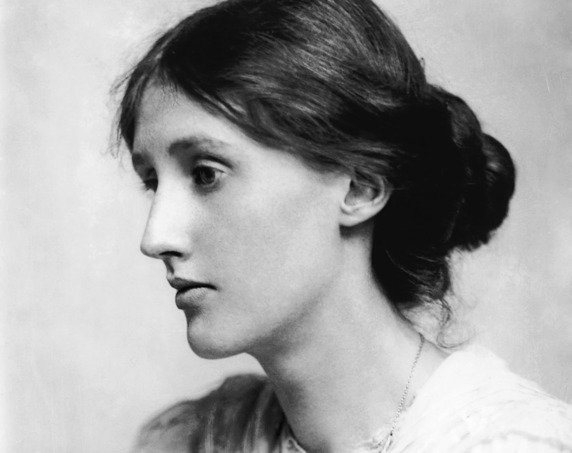The slipperiness of the soul
‘Virginia Woolf was one of Britain’s most important writers and thinkers, who played a pivotal role at the heart of modernism in the early twentieth century.’

So says Sandy Nairne, director of the National Portrait Gallery. The gallery’s current exhibition on Woolf is the first to use portraiture to explore her life and includes a collection of over 140 items. Her walking stick, letters to her sister, portraits of her friends and copies of her diaries have all been brought together by guest curator Frances Spalding, author of the accompanying catalogue Virginia Woolf: Art, Life and Vision.
The Bloomsbury Group
Virginia Woolf was born in 1882 as Adeline Virginia Stephen. Her father was a biographer and editor, her mother sat for Burne-Jones. Both of her parents had been widowed and brought into their union children from their previous marriages. This meant that Virginia lived with a medley of siblings; for much of her childhood she was one of eight children living at 22 Hyde Park Gate, Kensington.
Woolf soon became a prominent figure in the Bloomsbury Group, which she hosted with her sister Vanessa Bell. Also within the group were her good friends Roger Fry, Lytton Strachey and Leonard Woolf, who she would marry in 1927. Together, she and Leonard founded the Hogarth Press, publishing Virginia’s modernist novels as well as groundbreaking work by T.S. Eliot, Sigmund Freud and Virginia’s lover, Vita Sackville-West.
Woolf is primarily remembered by literary scholars for her unique writing style, which is often described as ‘stream of consciousness’. However, the National Portrait Gallery exhibition reveals that she was also deeply involved in politics, fashion and art. She raised funds for victims of the Spanish Civil War, posed for photographs printed in Vogue and was listed as a patron for a London showing of Picasso’s painting Guernica. The exhibition does a fascinating job of exposing this variety. However, there is at least one further aspect of Woolf’s vision that merits exploration: that of her religious belief.
‘Religion is detestable’
Like her father, Woolf seemed tired of conventional Christianity. She declared herself an atheist, was known to call religion ‘detestable’ and referred to God as an ‘old savage’. Often she wrapped her objections in jokes, as in one letter to Lytton Strachey where she declares: ‘I read the Book of Job last night – don’t think God comes well out of it.’
Nonetheless, she was always impressed with Russian novelists like Dostoyevsky who dealt with ‘the stuff of the soul’ and who ‘confound us with a feeling of our own irreligious triviality’. She was also, at times, drawn to Christian symbolism in her own writing and even seemed to experience a ‘mystical impulse’. It’s enough to convince the academic Pericles Lewis that Woolf’s work does not reject religion altogether, but rather ‘seeks new forms of the sacred that will accommodate the pluralism of modern life’.
Interestingly, he goes on to claim that Woolf was not opposed to Christianity any more than she was to atheism. Instead, she sought to explore multiple spiritual perspectives, refusing to allow one to have dominance over another. Indeed, when she does approach religion in her own writing, it is with a tone of questioning and inquiry. Of the novel Mrs Dalloway she wrote in her diary: ‘I want to give the slipperiness of the soul.’
Tortured soul
For Woolf, religion was not a source of truth and security. Instead, her multifarious moments of mysticism seemed to be connected to her struggles with depression. In one diary entry she wrote: ‘I wished to add some remarks [...] on the mystical side of this solitude [...] It is this that is frightening [and] exciting in the midst of my profound gloom, depression, boredom, whatever it is….’
Woolf had long suffered with mental illness. In 1941, when she was just 59, she committed suicide by drowning herself; she filled her coat pockets with stones and walked into the River Ouse. She left her walking stick on the river bank, a recent letter to her sister that explained her pain, and a collection of novels that have endured as classics of modern literature. All of them are on display at the National Portrait Gallery, and all of them point to a writer and a woman whose ‘religious vision of life’ (to quote Auden) is worth exploring further.



